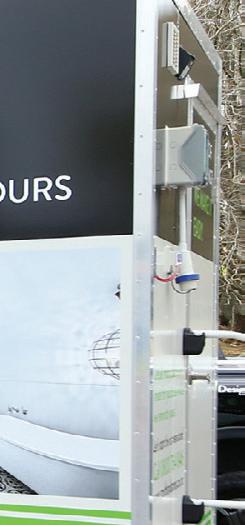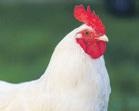



locay
OWNED








RURAL HEALTH:
WHAT’S UP, DOC?
SPORT SPELLS: BOOST FOR YOUTH






locay
OWNED








RURAL HEALTH:
WHAT’S UP, DOC?
SPORT SPELLS: BOOST FOR YOUTH


Water, Fall
Now – April 6, Franklin Arts Centre, Massey Ave, Pukekohe Sites across Auckland and Waikato (including Franklin) fall under the spell of the artists behind this exhibition. Inspired by the impact of floods and climate, the Hard-Pressed Collective reveals how water is a powerful force, whether in concrete jungles or natural wetlands. For more details visit www.facebook.com/FranklinArtsCentre.

Papakura ParkFest
March 23, 10am-2pm, Central Park, Opaheke Rd, Papakura Music sets the tune while dancing nails the pace for this free family event. As it also includes cultural performances, stalls (with sustainable goodies, food, arts crafts and more) and fun activities for children, we can expect the very best from Papakura’s ParkFest! Additional information is available online via www.papakura.co.nz.

Grandparents Raising Grandchildren
March 19, from 7pm, Karaka Community Event Centre, 372 Blackbridge Rd, Karaka
This informative fundraiser, designed to help grandparents playing a major role in raising their grandchildren, promises a grand old time! For details about this event (which features a guest speaker, ra e, silent auction, light supper and more) search ‘Karaka Women’s Institute’ on Facebook.

Yamaha Motor NZ Motocross Championships
March 23, Harrisville Motocross, Geraghty Maber Rd, Tuakau
A week before Easter, the hot cross guns of motorsport will be fired up in Tuakau for the penultimate round of an exhilarating series. Top riders, both men and women, will be hoping to clinch titles or (at least) prepare to go the distance come April’s final round in Taranaki. For more information visit www.mxt.co.nz and www.bikesportnz.com.

PLEASE NOTE: information regarding times & dates of these events was correct at the time this issue went to print. However, readers are advised to check events online for updates.

Looking
March 23 – April 6, times vary, Papakura Theatre, 41 Elliot St, Papakura
When a middle-aged pair of singles agrees to meet after connecting through a personal’s ad’ (that’s a paper version of Tinder, for the benefit of the TikTok generation!), a couple of friends come along for support. The result is a timeless and funny, farcical play. Details at www.ptc.org.nz.

Franklin Home & Lifestyle Show
April 6-7, 9.30am-4pm, PIA Centre, 59 Ward St, Pukekohe
No ordinary home show, this event serves up a slice of local life. In addition to exhibits by trade professionals covering every inch of the modern home, the Franklin Home & Lifestyle Show also includes entertainment, craft and food stalls from local businesses and so much more. For details visit www.franklinhomeshow.co.nz.

Barfoot & Thompson’s People’s Triathlon
March 24, 8am-12pm, Maraetai Beach, Maraetai
After a nice, long break over Christmas, competitors are back in action and close to home for the final round of this popular series. Following races at Mission Bay and Maraetai late last year, this series (suited to veterans and beginners) is set to cross the finishing line again soon. To take part or for more information visit www.peoplestri.co.nz.

Waiuku Steel & Wheels
April 14, 10am-2pm, Queen St, Waiuku
It’s back in action and ready to rumble! From vintage and classic cars to hot rods and motorbikes, this ‘revolutionary’ event has much in motion. Although it’s a ‘must visit’ for petrolheads, Steel & Wheels is no ordinary car show, making for a fun-filled family day out. Visit www.waiukutown.co.nz for further information.

Did ‘You know we belong together’? These theme song lyrics might not be familiar to some, but many stay-at-home parents will know them well. That’s because, across the country, there are highly educated, experienced people watching the soaps; while they aren’t unemployed, they’re not being fully employed either.
Raising the next generation of workers often continues to require one parent to park their careers up on blocks, which is a shame because a rich resource is being wasted.
A recent report by Dr Amanda Stirling (University of Auckland) asserts that: ‘Motherhood is still the most significant dropping-o point for women in leadership.’ Her research focuses on how motherhood, from pregnancy to childcare, impacts careers – search ‘motherhood and leadership’ at www.auckland.ac.nz to read more. Along these lines, surely more flexible working hours/locations would help.

From TV to video games, Easter eggs are always hidden somewhere these days. Although the majority of this issue is not devoted to a holiday during which we take it for granted that a rabbit delivers chocolate eggs, we do have a few bits and pieces to mark the occasion. As for the sharp dressed buck on our cover, he relates to a strange new trend – see page 46 to read more.








Similarly, how many great minds are occupied with resolving why Alf has a pathological desire to throw stones at (and then set fire to) crows, simply because Auckland is more than an hour’s drive away from home? Country people are also missing out, but more importantly, so too are the businesses to which they’d lend their skills.
I’m beating the ‘working from home’ drum again, but only because I still struggle to understand why some are so reluctant to dance to it. We should all appreciate the wider benefits –reducing tra c congestion, carbon emissions, cost of living and pressures on housing and healthcare for a start. While businesses debate pros and cons of work flexibility, government needs to incentivise them as the benefits can help address these issues.
On the following pages, we don’t discover anything behind Alf’s obsession with pyromania, but we do share why a former sport sort is committed to an educational programme and we met a man who’s

a ‘resounding success’ but (ironically) not one to toot his own horn. We also discovered more about an organisation advocating for equity in rural health. To round things o , we have bits and pieces suited to both Easter and Saint Patrick’s Day as well as competitions, events, books and more.
While readers plough through that, I must dash as I have to pick up my daughter. Fortunately, I live and work locally, so I’ll be back at the coalface quickly. Yes, no matter where I am, I can still be (somewhat) of a guiding star, whether I’m home or away.
Jon Rawlinson, editor








Editor: Jon Rawlinson
DDI 09 271 8036 editor@ruralliving.co.nz
Sales: Kelly Cooke
DDI 09 271 8026 kellyc@ruralliving.co.nz
Art Director: Clare McGillivray
DDI 09 271 8067 clare@ruralliving.co.nz
Design: Claire Robertson clairer@times.co.nz
Publisher: Brian Neben 151 King Street, Pukekohe, Auckland PO Box 38 232 Howick, Auckland 2145













Visit www.ruralliving.co.nz to enter our prize draws and be in to win. One entry per person/email address; entries close April 20, 2024. Winners notified by phone or email.










A warm shower on a cool, autumn morning sounds good, but soap scum and mould can be a nightmare! Fortunately, Wet & Forget knows how to ‘spell’ success thanks to Shower Witch. With no aggressive chemicals, this biodegradable mix is easy to apply – no brooms are required! We have bottles (valued at $55 each) of this (almost!) magical cleaning product to give away to THREE lucky readers.








Jumping Jack Flash, so we hear, is a gas. Perhaps he has a SodaStream!
By adding Lipton Iced Tea flavours to its range, SodaStream retains its place as a household name – in more ways than one. We have a prize pack (valued at more than $200), including a SodaStream Terra and bottles of the two new Lipton flavours (Peach and Lemon), up for grabs.










Courtesy of Pets R Us (supplying pet products and services Auckland wide) the SureFeed Sealed Pet Bowl is no ordinary piece of ‘tableware’. Opening in response to movement, it helps keep odours at bay while ensuring petfood remains fresher for longer, free from flies and tasting… well, as good as it can! We have one of these tricky contraptions valued at almost $140 to give away.
Big dreams can come in small packages and tiny home owners can live large as this notso-small book illustrates. Packed full of photographs depicting the wide variety of these homes throughout New Zealand, this book also includes the stories behind them, design ideas and more.
of

Bryce Langston: Living Big in a Tiny House | RRP $54.99 | Potton & Burton















While serving as a busy rural GP, Dr Fiona Bolden also chairs a nationwide network designed to address the specific needs of rural New Zealanders. Recently, we discussed this essential work… over the gate.
Although close to Auckland, Franklin has some remote rural corners. How active is your organisation here?
Our organisation advocates at all di erent levels of rurality. I owned a practice in Raglan for 17 years which had some very rural areas, although it was only 40 minutes to a major hospital. Sometimes issues in semi-rural areas can be even more complex as people don’t necessarily understand they only have access to rural health services and what that may mean.
What extra barriers do rural healthcare providers face as opposed to urban practices?
Rural general practices have less access to investigations and emergency departments, so they provide more pre-hospital care with extended services to avoid hospital admission. Some provide the PRIME (Primary Response in Medical Emergencies) service for the most severely injured or unwell, activated via 111. In some rural regions, the PRIME provider may be the only frontline clinician
available, often with long waits for ambulance services.
Because rural clinicians live in our communities, we may treat friends, our families, even ourselves, the boundaries between private and working life can be blurred. We also provide cradle to grave medicine with palliative care being managed at home where possible as there are no rural hospices.
Current funding is determined mainly by enrolment (capitation funding) so small, rural practices receive less than larger, urban
ones even though they have to cover similar expenses. This funding is floored as it doesn’t adequately cover the complexity of our rural populations.
What extra barriers do rural people face in accessing healthcare?
Aside from the points already covered, almost fifty per cent of rural practices have closed or partially closed lists to new enrolments due to critical shortages in the workforce. Access to other providers and services – including midwives, ultrasound and antenatal scans is also very limited due to severe shortages. Reduced access to healthcare also a ects preventative care eg immunisations and screening.
Due to the size of rural practice coverage areas, it can take hours for the people on the outskirts to reach help. Hospital appointments may require rural people take more time o work. Increased distances to travel cost more money and there is a scarcity of public transport rurally.
Another factor is limited internet and cell phone coverage, which makes virtual consultations very di cult for some and challenges rural clinicians whenever we are trying to contact people urgently.
Are there extra mental health issues facing rural people?
Suicide rates have always been higher in rural areas. There’s an increased access to lethal means, increased isolation and huge challenges around accessing care and support. However, there has been strong support through organisations such as The Rural Support Trust and Farmstrong.
There has been an increase in mental health issues among young rural people alongside a decrease in adequate services in many areas and a national
shortage of psychologists. Financial pressures, lack of appropriate work and support can create further stress, especially after injuries. Added to this are pressures following extreme weather events, which can be especially problematic for rural businesses.
When was Hauora Taiwhenua first established, what is its primary aim and how e ective has it been?
The network was o cially launched in July 2022. The primary aim was to increase advocacy and support across a broader sector of the rural health community. It has been very e ective – we helped drive changes to the Pae Ora (healthy futures) Act 2022 to include rural health as a key focus. As a result, New Zealand has a rural health strategy and we have been consulted with widely on its development. We provide a clear route through which government can communicate with the wider rural health sector.
Is government doing enough to encourage young doctors to take on a country practice? Are the Voluntary Bonding Scheme (VBS) and Rural Health Careers Promotion Programme helping?
No. This will only happen with adequate training and better funding of rural healthcare, including wages and addressing the challenges around 24/7 care.
The VBS has had limited e cacy in other countries – it is better to have people who want to work rurally and who are appropriately rewarded for it than it being a condition of their funding or job placement.
On the other hand, the Rural Health Careers Promotion Programme has been very e ective. It involves working with rural school children who are likely to want to return to rural
communities and understand rural challenges. It is probably too early to see whether children taking part will end up in rural health careers, but this is what we would expect. However, rural schools also need support to make sure students are adequately prepared for further tertiary training.
If you could grow any plant or raise any animal (real or imagined), what and why?
I would like to raise unicorns as they embody optimism and creativity, something I need a lot of when working within the rural health sector! Also, I know that my grandchildren would love to ride them!
If you could be Minister of Health for one day, what would you do first and why?
I would also be minister of finance as many of the barriers we face are to do with how funds are distributed. I would redirect funding into general practice in order to make it a more sustainable and attractive place to work, while encouraging long term, continuous care for everyone, which improves health outcomes by 30%.
If you could invite any three people to dinner (living or dead), who and why?
Malala Yousafzai [a Pakistani female education activist] who has great courage and wisdom, Nelson Mandela for his huge experience around advocacy and change, and David Attenborough – despite his age he never gives up on our planet!
For more information about Hauora Taiwhenua as an advocate for rural people, visit www.htrhn.org.nz



The ‘post’ man always delivers. Most who’ve attended horse races in Auckland during recent years will have heard John McGough even if they haven’t heard of him. Also known as ‘the trumpet guy’, John plays a pivotal role by playing The Call to Post.
“The Call to Post started at the races in the mid-1800s,” John explains. “It was to let punters know horses were coming out onto the track, so they’d need to hurry up and place bets. These days it still inspires the crowd, although I think they become more inspired when I play later in the day, after they’ve had more of their bubbles and beer!”
Originating in the military, The Call to Post (or First Call) was a signal for troops to stand to with more orders to follow. In a way, it’s now become racing’s equivalent of an All Black haka, but does this jaunty tune also spur the horses into action just as it does two-legged sportspeople?
“I don’t know about that!” John laughs. “The horses are used to it though, so maybe it does.”
Fitting (literally!) the tradition, John wears a coach horn outfit, including the iconic red coat with tails and top hat. While thankful of his weighty garb during cold, winter races, John says it can mean he’s hot to trot (he also plays ahead of harness races too) long





before the horses break a sweat.
“Fortunately, it is made from light material and the piece of music is short and sweet, but as soon as it’s done I get rid of the jacket pretty quick!”
No one hit wonder, John is also called into service to play The Last Post on ANZAC Day. In both cases, the pressure is on.
“Similar to The Last Post, The Call to Post isn’t so much a tricky piece of music, it’s more that everyone knows how it’s supposed to go. If you’re having a bad day with lots of errors, everyone’s going to know!”
With the lion’s share of racedays returning to Auckland Thoroughbred Racing’s Ellerslie base this year, following major redevelopments, John is less likely to don his garb to raise a tune at Pukekohe Park. However, while combining his love of music and racing, he says he’s greatly enjoyed his homecoming (of sorts) over the past year or so and looks forward to rousing local crowds again whenever his calls are called upon.
“When I was a young fella Dad used to take me to the races. So, when I heard they were looking for a trumpeter about six or seven years ago, I went right out and bought all the gear because it was too good an opportunity to miss!” he says. “I always enjoy it when playing [at Pukekohe Park].




My family are all from Pukekohe with many of my cousins still living there.”
Former Pukekohe High students, John’s father and uncles all played brass instruments. One of his uncles, Neil, became a conductor of the Auckland Symphony Orchestra, and another, Murray (aka Murray Marsden) met with popular success in the sixties.
In addition to working in sales, John performs more broadly as a musician, MC and even as a DJ. Well versed in spinning records, he’s no stranger to making them either. Playing with numerous bands over a lengthy career, including the RNZAF Auckland Base Band and the National Band of New Zealand, John has two solo albums and a number of joint e orts to his credit.
“I competed in the World Brass Band Championships twice. We came fourth (2013) then second in 2017. Representing my country was huge and it was amazing to do so well.”
While he’s posted a few resounding victories of his own, John’s seen many champions earn honours from his trackside seat at the races.
“There’s just something about racing that really inspires me,” he adds. “It’s so wonderful to play even just a small part during such huge occasions.”


To book an appointment or email
Thanks to a new equine centre on Speedy Rd, Glenbrook, Franklin Vets is ready to provide new courses for horses, as Dr Catherine Pemberton explains.


In collaboration with EquiCare, the Franklin Vets Equine team is excited to con rm we are now providing appointments at a purpose-built equine facility conveniently located in Glenbrook. The use of this facility ensures that our experienced and dedicated team of equine vets can provide comprehensive care tailored to horses’ speci c needs.
Featuring a concrete trot up, spacious covered yards, an all-weather arena, easy parking with large turn-around and examination areas. The centre is quiet, private and equine-friendly, ensuring a stress-free and safe experience for our clients and their horses.
Thanks to its vast range of amenities, the facility is ideal for services from pre-purchase examinations, x-rays, lameness workups (including ridden exams), dentals and scoping procedures. What’s more, saddle tting and physiotherapy services are also on offer courtesy of the EquiCare team.



Appointments are available Mondays to Wednesdays, 8am – 4pm, with no travel or facility charges. Simply contact the Franklin Vets Equine team on 09 238 2471.

Foals should be vaccinated from 12 weeks of age and ideally before weaning. Remember that weaning is a high-stress time for foals, which makes them more susceptible to health challenges
Sheep, goats & alpaca need drenching for barber’s pole. As this blood sucking parasite wreaks havoc during the hotter summer months, drenching practices must be up to date, especially for younger stock. Signs of anaemia this worm

include lethargy, weakness, and animals separated from their flock. Also check for pale gums and pale conjunctiva (the insides of eyelids). Contact us as soon as possible if these signs are present
Flystrike is extremely common at this time of year and also requires immediate attention from a vet. Affected sheep may be restless, appear itchy, or they may appear lethargic and acutely unwell if they have a heavy burden. With woolly sheep, have a hands-on look around their back ends, thoroughly
parting the wool to inspect the skin closely. Shearing at the right time, in combination with products such as Cyrex, is the best method for prevention of flystrike
Keep an eye on local spore counts and top up preventative treatments for facial eczema. Ask us for more details if needed
Chook houses should be checked for deadly red mites as they thrive throughout summer. Because these mites are nocturnal, running a finger along the undersides of perches at night is the best form of detection










A recent meeting of Auckland Council’s Rural Advisory Panel yielded a little food for thought concerning the Super City’s country regions. The following summations are based on articles by Laura Kvigstad (Auckland Council reporter, funded by NZ on Air).
Balancing the needs of rural and urban residents could become more complicated, Auckland Council’s Rural Advisory Panel heard recently.
“Franklin is going to get to 180,000 [residents] with that Drury development,” Franklin Local Board deputy chair, Alan Cole, said.
His comments follow discussions about reducing the number of local boards from 21 to 15. Fortunately, it appears that the Franklin Local Board is likely to remain intact, however its boundaries may change.
Auckland’s unsealed rural roads could soon be on the road to improvement after their vulnerability was exposed during flooding in 2023. And yet, urban
voices could drown out rural opinions when consultation opens for the plan, Rodney’s Greg Sayers warns.
“The risk is [that] other Aucklanders might say they would rather that $124 million be spent elsewhere.”
With more than a quarter of Auckland’s dairy farms shutting down over the last five years, dairying is on the decline,
“It is a dying industry. A lot of these farms are being converted for other activities such as subdivisions,” Robert Laulala (Auckland Council’s, environmental monitoring manager) informed the panel.
Should this trend continue, the wider region would be ‘worse for wear’, Linda Potauaine (Waitakere Ranges Local Board) added.
“We are in big trouble in New
Zealand if dairy is dying [across the board[ because we will all die and starve to death,” she said.
In the meantime, Auckland Council has apologised for an ‘insensitive tone’ taken in invoices sent to dairy farmers. Discharge monitoring charges were delayed resulting in some invoices totalling up to $1,000 with recipients advised to ‘pay immediately’ although no information about council’s payment plan option was provided.
“A lot of [farmers] understand the invoices but they are perplexed by the amount [and] there doesn’t seem to be any way to dispute an invoice,” Franklin Local Board’s Alan Cole said. He added that the timing of their release, around calving season, exacerbated the problem.
“When they are under the pump, farmers tend to chuck things on the pile and don’t come back to it.”



Not one to climb up on his high horse when it comes to ‘the sport of kings’, Wayne Martin was a prince among men in our books by popping along to capture some of the action at the recent NZ Polo Open at Clevedon Showgrounds. Visit www.ruralliving.co.nz to view our full gallery.
























Rich rewards and winning career moves are on the line during April’s Young Farmer of the Year Waikato/BOP and Northern regionals. Contestants will face farming-related challenges with the best booking themselves a place in July’s grand final.
“No matter your skillset there’s something you can bring to the table,” says Chloe Jones from NZ Young Farmers. “Every competition is di erent and contestants start each day not knowing what skills they’ll be tested on. It definitely keeps things interesting.”
Junior Young Farmer and AgriKidsNZ further strengthen grassroots competition. For further information visit www.youngfarmers.co.nz.
Noted for their e orts, Awhitu Peninsula Landcare, Trees for Survival and Pukekohe Christian School have each received $5000 Environment and Sustainability grants intended to help fuel their projects.
“We’re delighted to continue our support of local not-for profit community groups [with] sustainability-related project funding,” Tracey Kay from Counties Energy confirms. “Working with our community to help make a di erence for our Tamariki is heartening and inspirational.”
For more details about these projects and the grants search ‘grants’ at www.countiesenergy.co.nz.
Locals and others in the primary industries have been on a roll (and on the honour roll) recently, or looking ahead at contests/rewards to come, including:


Brinksmanship isn’t always the best practice in sport but it proved a winning formula for the victors of the recent 2024 NZ Polo Open. Team Brinks secured the title 9-8 against Ecogas at Clevedon Showgrounds on February 18. However, the defeated finalists did have the wood on Brinks in one way as Bruce Fraser from Ecogas (who featured in our Jan-Feb issue) was named MVP. Further results are accessible online via www.nzpoloopen.com.
Whether a ploughman hoes the perfect row, a sheep trialist whistles up a win or that young man Jack (Jordan) has cut the competition down was still to be confirmed as this issue went to print. However, finalists’ details for the Rural Sports Awards (part of the NZ Rural Games) were released in time.
Bob Merhtens (the ploughman), Neil Evans and timbersport legend, Jack Jordan were all up for NZ Rural Sportsman of the Year, with Samantha Ottley (harness racing), Sacha Bond (shearing) and Anne Patterson (timbersport), vying for top Sportswoman honours.
How did they fare? For full and final results see www.ruralgames.co.nz.
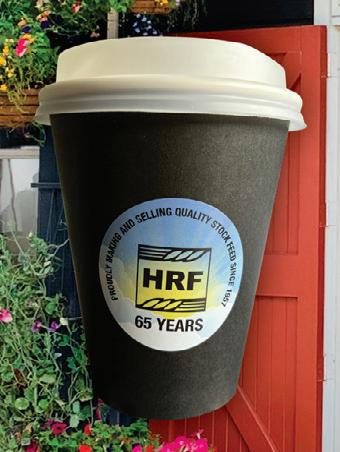




For the most part, news cannot be served in bite-sized pieces. However, in e orts to serve readers a balanced diet of news (is there any such thing?), we’ve included the following matter-of-fact morsels to chew over.
The fate of the Pukekohe’s Youth Centre building is on the line. However, Auckland Council developer, Eke Panuku, has confirmed the property’s sale could be years away and Franklin growers can expect to reap benefits in the meantime.
“This space [provides] an opportunity to really celebrate Franklin’s importance as one of New Zealand’s major food producers,” says Connie Clarkson from food incubator programme, The Kitchen Project. “We are looking forward to shining a light on exceptional growers and hospitality providers that form the backbone of Pukekohe’s manakitanga.”
Part of council’s Edinburgh Superblock, the Roulston Street building (once the home of the Franklin Times), is also set to host a relaunched Kai Franklin.
“We are bringing Kai Franklin home! We are working through ideas which will have a real community focus,” Ms Clarkson adds. “We are hoping that seeing 1 Roulston Street come to life will inspire [future] developers to realise its potential.”




A ‘sweet Guy’ well known to Rural Living is practically buzzing with excitement following the release of a new apiculture strategy.
“[Thriving Together], has the aim of resetting the industry’s ambitions for a strong, sustainable future… and provides a means to access resources needed to invest in that future,” says Apiculture NZ chair (and former

While top lots nailed spots when under the hammer at NZ Bloodstock’s Karaka Sales Centre earlier this year, dark horses are set to follow in their hoof-steps. Horses sold during the National Online Yearling Sale (April 12-17) will be eligible for a prestigious racing series, Kane Jones from NZB confirms.
“The sale o ers breeders and vendors a cost-e ective and straight-forward opportunity to sell yearlings to a wide audience,” he says. “It has already proven to be a great source of genuine racehorses and the attraction for buyers is only strengthened by [it providing] Karaka Millions’ eligibility.”
Minister of Primary Industries), Nathan Guy. “While the industry is facing significant challenges, we haven’t lost sight of the growth potential. New Zealand is a trusted source of highquality honey, and commands premium prices for all its honey products.”
Recently endorsed by Minister of Agriculture, Todd McClay, the Thriving Together strategy is accessible via www.apinz.org.nz.


ARRIVING SOON

OMODA is from the future, for the future. Innovative, effortless technology. Advanced safety features and Futuristic design. Join Winger Motors Pukekohe on this journey.
OMODA is from the future, for the future. Innovative, effortless technology. Advanced safety features and Futuristic design. Join Winger Motors Pukekohe on this journey.
OMODA is from the future, for the future. Innovative, effortless technology. Advanced safety features and Futuristic design. Join Winger Motors Pukekohe on this journey.
OMODA is from the future, for the future. Innovative, effortless technology. Advanced safety features and Futuristic design. Join Winger Motors Pukekohe on this journey.
Available Models:
Available Models:
Available Models:
OMODA is from the future, for the future. Innovative, effortless technology. Advanced safety Futuristic design. Join Winger Motors Pukekohe
Arriving in our showroom this month in Petrol & Electric options!
Arriving in our showroom this month in Petrol & Electric options!
Arriving in our showroom this month in Petrol & Electric options!

C5 1.5T
BX FWD C5 1.5T
C5 1.5T BX FWD C5 1.5T EX FWD C5 1.6T GT FWD C5 1.6T GT AWD
Arriving in our showroom this Petrol & Electric options!
Winger Motors Pukekohe
Winger
69 - 77 Manukau Road, Pukekohe
69
09 239 2389 | winger.co.nz
69 - 77 Manukau Road, Pukekohe
09 239 2389 | winger.co.nz


As minister responsible for one of New Zealand’s highest earning industries, Todd McClay has some big boots to fill. Fortunately, as our summations of reports from his o ce reveal, it appears as though he is already rustling up the support he needs to get the job done.
There’s a new sheri in Wellington and he’s been rounding up deputies to assist him. As Minister of Agriculture, Todd McClay has harvested some heavy hitters as he sharpens his aims for our primary industries.
“I will be supported in my roles (Minister of Agriculture, Trade, Forestry and Hunting and Fishing) by three associate agriculture ministers, Nicola Grigg (National), Andrew Hoggard (ACT), and Mark Patterson (New Zealand First), who will each have delegated areas of responsibility to provide focus and ministerial dedication,” he confirmed.
All three of these ministers assisting Mr McClay also hold other portfolios that relate to primary production or rural matters. Andrew Hoggard draws on vast rural experience as an ex-Federated Farmers president while Mark Patterson is a former chair of Otago Federated Farmers. Nicola Grigg (Minister of State and Women) also has strong ties to the farming sector, especially in Mid Canterbury,
“These delegations will allow [us] to focus attention on key areas of the primary sector, providing the resources and support they deserve,” Mr McClay asserted. “New Zealand’s food and fibre sector makes a critically important contribution to our economy and the fabric of our rural and regional communities.”
Along with his associates, the minister aims to rebuild confidence across the primary sector.
“Our team is committed to… reducing the burden on farmers caused by unworkable central






government policies, meeting farmers and their concerns at the farm gate, and working alongside industry to achieve tangible outcomes for New Zealand’s rural communities so our farmers can spend more time farming.”
During ‘bipartisan celebrations’ at parliament on National Lamb Day (February 15), our Minister of Agriculture was not at all sheepish about being sheepish.
“Sheep farmers continue to make an invaluable contribution to our primary sector and this government is committed to celebrating and supporting that,” he said. “[We are] focused on getting costs down for our farmers. We recognise the challenges farmers are facing… and the ongoing barriers faced across the wool sector.”
Leading up to a major milestone, this year’s National Lamb Day celebrations also looked ahead to May and the anniversary of the first refrigerated shipment of meat to leave our shores bound for London.
“[We] recognise the red meat sector’s enduring resilience as
an industry that has consistently contributed to New Zealand’s exporting portfolio and understand we have an obligation to make sure we are not imposing any unnecessary costs on farmers.”
Mr McClay also announced he is leading a national woolshed roadshow during which ministers will be meeting farmers in their woolsheds to discuss grassroots solutions.
A half dozen students prepared to get their hands dirty can now count on government support through On Farm Support Science Scholarships.
“We have awarded six scholarships, worth a total of $30,000, to students studying agricultural or environmental science degrees,” Mr McClay confirmed recently. “We’re backing a range of initiatives to grow the capacity and capability of the primary industry advisory sector. [This] is vital to supporting farmers as they adapt, change and thrive.”
For more information about the scholarships and their recipients, search ‘On Farm Support Science’ at www.mpi.govt.nz.

 By Ditch Keeling, Coastal Pest Solutions
By Ditch Keeling, Coastal Pest Solutions
Gidday folks. I followed, with great interest, a recent story about rats and mice in a Dunedin supermarket. Supermarkets have long standing pest control contracts and rodent bait stations, often just metres apart, right around their perimeters and throughout all their stores. So, I’d love to know what type of bait they have been using in them as it sounds like it’s one that I definitely want to avoid!
As the weather cools during autumn and into winter, rats and mice will be moving into our buildings. If you’ve ever wondered what’s causing that annoying gnawing noise in the roof, it’s almost always from rodents chewing on cables and pipes to keep their teeth nice and sharp. The damage these little guys can do is often extensive and this has the potential to be particularly dangerous as it is responsible for causing
many more house fires and water leaks than you might think.
However, when you consider that almost any rodent infestation can be removed for less than a couple of hundred dollars, it’s simply not worth the risks of ignoring them.
Problems often start with rats gaining access into ceiling cavities, and if one can do it you can bet that others will follow – I spend a lot of time up in ceilings where the amount of rat poo present shows years of regular use. The first course of action should be to remove branches that permit roof access because if they can’t get in, they can’t cause bigger problems. An easy fix, all it requires is a little work and viola, no more rats! Also remove dense vegetation around the bases of buildings – mould and bugs, as well as rodents, don’t have the right conditions to
become established if the environment is clean and tidy.
Sometimes limiting access alone won’t stop rats entirely and it isn’t always possible to do so, in which case you will need to apply either bait stations or traps.
While traps can work, they seldom achieve the same results as a wellrun bait station programme using toxic bait, which is certainly the most e cient form of rodent control. There are many varieties of rat bait available on the market these days but, sadly, a lot of them just don’t do the business – as mentioned, clearly some poor bait choices are being made in the deep south for a start!
When it comes to bait, Pesto Rodent Blocks have never let me down and I stake my reputation on guaranteed success when using them. These chocolate lured baits are incredibly attractive to rats and mice and, over the course of 25 years, I have yet to find a more rodent bait that’s been more e ective.
Even if you’re comfortable with establishing your own bait station programme, it’s still best to seek some expert advice. So, please feel free to email or call me and I’ll be happy to recommend the best rat and mouse control products available or take care of the job for you entirely if necessary.
In this semi-regular section, we share anecdotes
Saint Francis may have been the patron of animals, but perhaps Saint Pat’ was in at least one local cat’s corner. Rescued during a fierce storm (on or about Saint Patrick’s Day years ago), Patrick Francis Malone (pictured) certainly had the luck of the Irish working for him. However, it appears his Irish ‘spirits’ run deeper.
Although it’s customary to partake of a little revelry on March 17, Paddy from Pukekohe began his celebrations a week or so early this year. Given a new catnip toy, Pat acted like the cat who got the cream, his humans report.
Unfortunately, as many of us are reminded on March 18, merriment can come with strings attached. While there’s no need to ‘harp’ on about it, we do wonder if this Paddy’s indulgences the previous evening inspired his less than flattering flat-out pose following premature celebrations of his namesake. If so, maybe this is a cautionary tale; perhaps it wasn’t curiosity but actually a Pat’ that ‘killed’ the cat!






















IReay Neben is the publisher of Rural Living
can’t believe it’s autumn already! Thankfully, the weather has cooled a little and we’ve had some muchneeded rain – I imagine those of you on tank water are relieved. Shortly before writing this, I noticed my grass was green again, which is great because my garden was looking really sad and I have lost some plants due to too much heat and not enough rain for so long. But it has meant the weeds have been back in force.
While the weather has been cooler lately, Brian was rather cool (in a way!) too when we attended a fabulous wedding in February. The groom was the grandson of my friend Val and her late husband Tony – I have written a lot about our adventures with these two over the years. It was wonderful to be among lifelong friends and family celebrating a happy occasion.
Planning what to wear to the wedding was not a problem for me as I can always pop to the shops, but Brian simply did not want to wear his suit. However, as we discovered that wasn’t a problem either because his suit

The lovely couple, Sarah & Liam Church
trousers didn’t fit anyway. The last time he wore them was back in June, for Tony’s funeral, so summer celebrations have taken their toll to the tune of at least a few inches. Fortunately, we got him sorted with another pair of dark trousers and a jacket, so he looked the part after all.
Suitably, the weather for the big day was perfect although really hot. The venue was one I’d never been to before, Kauri Bay Boomrock on the Clevedon-Kawakawa Road. What a fabulous, rural spot it is, with views out over the Hauraki Gulf, and the food and service (and everything else, actually) was amazing! Guests were even given parasols to help keep cool while we sat outside waiting for the wedding to begin.
The following day we had a bit of an after-match function at the groom’s parents’ house in Beachlands. We haven’t been out for ages, so doing so two days in a row was quite special. Even though Brian said we wouldn’t stay long, it was so di cult to get him to leave – some things don’t change!

Overall, the last few weeks have been quiet for us. However, a couple of my Pilates’ friends including instructor Jo Plummer (a well-known former sportswoman, mother of Blues’ star, Harry) and Leanne, took me out for morning tea, which was lovely. I used to complain to Jo that I was too old for the exercises, considering some others in the group were the same age as my daughter, but I loved it and I do miss it. Perhaps I’ll take up Pilates again, or perhaps it’s best I stick to the morning tea catchups instead.

A Puni farmer, Russell Preston is no one trick pony. With an important programme still in his sights, Counties Manukau Sport ‘chief’ is not prepared to lay down his guns, not completely and not just yet, as JON RAWLINSON discovered.
When Russell rustles up a posse we can expect a star cast, even if it doesn’t include Taylor Swift. Based on foundations by Kiwi American Football star (a three-time Superbowl winner), Riki Ellison, a Youth Impact Programme (YIP) has been scoring points here.
“Riki’s vision for helping young people set life goals [can] heavily influence their future behaviour,” former Counties Manukau Sport CEO, Russell Preston, says. “Cameos from sports stars reinforce the passion and aspiration needed to achieve goals while qualified teachers provide the numeracy and literacy components.”
Although an educational e ort at heart, the YIP’s sporting element fosters honour, teamwork and commitment while boosting self-esteem and a sense of belonging.
“Students are engaged in a week-long programme to give them a sense of their own identity and purpose. The education system provides a ‘one stop shop’ framework, but this programme covers their individual aspirations.”
Despite a successful pilot at Pukekohe North School last year,
the future of the YIP hangs in the balance as Counties Manukau Sport may not continue it in its current form, possibly running an alternative instead. But there’s still hope it can make the grade.
“The pilot was hugely successful. Pukekohe North principal, Jim Sta ord-Bush, said the attendance rate went from around 46 per cent [prior] to close to 90%. Also, what the Ministry of Education calls ‘playground incidents’ dropped at the school from an average of 97-98 to just 13 per term.”
Teachers are required to volunteer time outside school hours, but they also reap benefit.
“Students come back to school more focussed as a consequence, so teachers find it easier to teach. The kids are happier, but the teachers are also happier and less stressed, meaning fewer sick days and less spent on relief teachers.”
Other ‘high profile’ parties have shown interest in backing the programme should Counties Manukau Sport turn its attentions elsewhere. An upcoming camp (mid-April, to be attended by Riki Ellison) could further assist in getting this initiative across the line, and it has met with the approval of Port Waikato MP,

“I flirted with joining gangs, but sport was my saviour… Sport helped me and I know it can help these young people too.”
Andrew Bayly.
“The greatest challenge overall has been [accessing] funding, but it still looks promising,” Russell says. “I’m extremely grateful to Andrew for his support. He’s seen the impact on the students in his electorate first hand.”
Based on psychologist Abraham Maslow’s Hierarchy of Needs, the YIP encourages students to make more constructive choices.
“I call it the snakes and ladders of life. Basically, everyone needs to eat, somewhere to sleep and a sense of belonging. Marginalised kids receive comfort from gangs as they feel like they’re part of a team, but we can give them something better.”
Much like the youngsters the

YIP is designed to assist, Russell also came close to taking the wrong road in life.
“I was born in Papakura and grew up in a single parent family in Takanini. I flirted with joining gangs, but sport was my saviour,” he recalls. “I played footie for Redcli e [in Australia], then rugby league for Ellerslie before playing a few more years in the UK. Sport gave me a sense of belonging and taught me some priceless values. I’ve met a lot of people and made some great mates. Sport helped me and I know it can help these young people too.”
Despite avoiding falling afoul of the law himself, Russell still ended up behind bars, albeit in a much di erent capacity.
“I worked for the Ministry
of Justice (1986-1991) and became an inspector for prisons and probation,” he recalls. “I introduced rugby league into Paremoremo. Early on, I was criticised as one of those trendy leftwing social workers! The prisons played in [an] Auckland competition. While seventy or eighty prisoners wanted to play, only the best behaved 17 could – after about six weeks, the prison governor said it was the best behavioural modification programme they’d ever had!”
Turning lives around matters, but ensuring young people put their best foot forward is more important, Russell contends.
“We need more interventions at marae and even preschools. The earlier we reach children and
set them o on the right path in life, the better.”
After decades of service to his community, Russell is still hoping the YIP will continue in its original form allowing this ‘cowboy’ to ride o into the sunset knowing it is in good hands.
“We had a Buckland lifestyle property before moving to Puni. We have 160 acres and raise Herefords. I was juggling commitments at Counties Manukau Sport with farming for years, but I’ve had huge support from friends and my partner, Janine, which I couldn’t have done without,” he adds. “I’m looking forward to retirement. For one thing, Herefords are calm and much easier to work with than some people!”






























Love, loss, war and friendship combine in this book by bestselling author, Kristin Hannah. Raised on a Californian island, Frankie has led a sheltered life but it’s the 1960s and the times they are a changing! When her brother leaves to serve in Vietnam, she follows becoming a nurse. This book presents a portrait of a young woman coming of age in a dangerous time with her nation divided.
Kristin Hannah: The Women | RRP $37.99 | Macmillan
Rather than adding one new addition for her popular bilingual Run, Rabbit series, Norah Wilson has hopped to it with three, all released in time for Easter. The latest books see Little Rapeti on an exciting treasure hunt, overcoming nerves at a swimming hole and learning how to bake.
Norah Wilson & Kimberly Andrews (illustrator) | Run, Rabbit – Cake Bake, The Swimming Hole & Treasure Hunt | RRP $21.99 | Scholastic NZ











A humble servant at Larnach Castle, Greer Gillies must rely on newfound friendships as she struggles with love, grief and a restrictive society to achieve her dreams. Set in late Victorian Dunedin, this historical novel reveals some of the obstacles women had to overcome just to make their way in what was, most certainly, a man’s world.
Karen McMillan: Turbulent Threads | RRP $37.99 | Quentin Wilson Publishing


One of the most tumultuous times in our country’s history forms the backdrop for this work of historical fiction. As the New Zealand Wars rage, the fates of two women (Frances and Mātaria) become intertwined as both must fight for what is right while settlers and iwi become embroiled in a devastating conflict.
Lauren Keenan: The Space Between | RRP $37| Penguin







Move over Shaun the Sheep, there’s a new ewe (or ram at least!) in town! Why can’t Kevin go with the flow and follow the flock? An unusual character, this endearing little sheep just can’t seem to fall in line! However, as this witty story unfolds (unravels?), Kevin’s individuality may just prove to be his saving grace.
Kate Scott & Jacqueline Harvey (illustrator): Kevin the Sheep | RRP $22 | Pu n






A troublesome tui learns that counting (ironically) isn’t ‘for the birds’ in this melodious book by acclaimed children’s book team, Elena de Roo and Paul Beavis. At heart this is a simple book intended to help little ones learn to read and count. However, add lyrical text and quirky illustrations and Ring Ting Tui! hits all the right notes.
Elena de Roo & Paul Beavis (illustrator): Ring Ting Tui! | RRP $21 | Picture Pu n









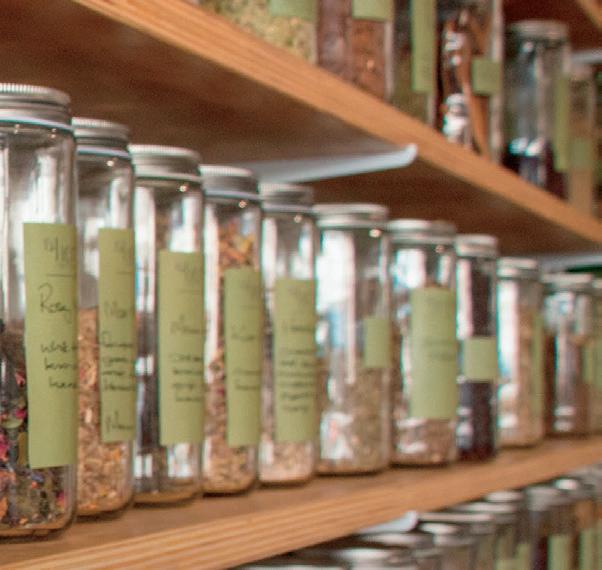










A local school bus route is set to be derailed. The Ministry of Education (MOE) plans to halt funding for buses transporting students from Pokeno to Tuakau College from April 1. However, Port Waikato MP, Andrew Bayly, is focused on finding a way forward.





































“I have met with Minister of Education, Erica Stanford, on multiple occasions and we are trying to find a solution,” he confirms.






Public buses could prove an alternative, but at a cost to parents and, unless capacity is increased, this may not ensure students will make it to class on time.






‘We are not talking about a small number of students,’ a statement from Tuakau College asserts. ‘The [MOE] has a moral obligation to the families to find a solution.’












Park life has never been better in Paerata Rise! Recently opened, Liberty Park is designed to be wheelchair-accessible while Central Bark caters to four-legged locals, project director, Ross
Taylor advises. “We are dedicated to supporting the local community. We look forward to welcoming everyone to enjoy this new space in the coming months.”













There are many stories in the naked city, this is just one. A sledgehammer wielding burglar was caught with his pants down (figuratively if not literally!) after a Pukekohe local observed a break in progress at his home through his security cameras.
“The victim and his neighbours [called] police immediately after seeing the o ender enter a Paerata Road property and take a number of items before fleeing on foot,” explains Inspector Joe Hunter, Counties Manukau Police. The man was then seen “jumping and running through multiple properties and taking clothes o to try and change his appearance.”
Insp Hunter credits quick thinking by the homeowner and sta for helping tackle the ‘cheeky’ o ender who was arrested after a short foot chase
The suspect has since faced charges of burglary and unlawful entry in court where, most likely, he was better dressed than when apprehended.
Ratepayers across Franklin may experience ‘that sinking feeling’ when opening future rates and water bills. With central government altering course on a raft of issues, councils are seeking to better channel resources.
Transport, water management and even a possible targeted rate (of $52 per year for Frankliners, devoted to local paths and trails) are all on the table for Auckland Council’s Long-term Plan (LTP).
“Our transport and water services are core priorities we know we need to invest smartly in for long lasting solutions,” Auckland Council’s Phil Wilson says. “We have real challenges and opportunities ahead and this Long-term Plan is geared at delivering on key issues for Auckland, along with how we grow our economy.”
Mr Wilson’s comments follow
Watercare confirming Aucklanders will see charges increase by more than 25 per cent.
Consultation for Auckland’s LTP is open until March 28 - details at www.aucklandcouncil.govt.nz.
While Auckland forges ahead, Waikato District Council’s LTP has been replaced by an ‘enhanced annual plan’ due to ‘significant policy changes’, the council’s Gavin Ion confirms.
“Government’s water infrastructure policy and a ordability implications locally need to be resolved,” he says. “We also need better understanding of Waka Kotahi subsidies secured for the district’s roading.
“Even though there will still be tough decisions to make on rate increases, [this] ensures the best long-term outcomes.”
For more information visit www.waikatodistrict.govt.nz.







PetRe cover y is a natur al supplement t hat combine s de er velvet , glucos amine, and chrondroiton to suppor t healt hy joint s and mobilit y in older c at s and dog s It provide s nut r itional pre cur sor s for c ar tilage healt h and promote s over all well-being wit hout side- effe c t s
502 402 or online www.silberhorn.co.nz

















Packed with skin loving ingredients, Linden Leaves’ Skin Refining Cream Cleanser is designed to redefine in more ways than one! Formulated to be particularly kind on mature or dry skin, it features jojoba for hydration, echium seed for damage repair and papaya to help brighten skin and deliver a radiant complexion. This crafty cleanser is available (RRP $49.99) as part of a quality, Kiwi range.








Dr LeWinn’s Daily Polishing Powder (RRP $64.99) is formulated to aid in regenerating skin. A mild aminobased powder cleanser, it contains exfoliants considered gentle enough for daily use, and niacinamide to brighten and even skin tone. In addition, its salicylic acid dissolves deeper into the pores to further help exfoliate dead skin cells.










Noughties’ glam is back thanks to Ardell’s Duo Line It Lash It two in one eyeliner and lash adhesive. Providing a liquid eyeliner and false lash adhesive, this waterproof wonder (RRP $19.99) can be worn with or without false lashes.
















Light and non-greasy, Bondi Sands’ Sport Wet Skin Sunscreen can be applied to wet or dry skin. Rated at SPF 50 it’s intended to provide protection even while we sweat. Ideal for athletes, who need to keep cool and composed when under pressure, this handy sunscreen (RRP from $19.99) is a good sport for all sorts, whether we’re on the go, at work or play, or relaxing under the last of the summer sun.



























Anew school will help heal a sore point by addressing an old school problem – a lack of healthcare in rural areas.
A recently signed memorandum of understanding between government and The University of Waikato forms the foundations for New Zealand’s third medical school, which should alleviate pressure on health providers across the Auckland and Waikato regions and beyond.
“We eagerly anticipate working alongside the university and colleagues at the existing medical schools to train as many graduates to work in rural areas as possible,” Dr Grant Davidson from Hauora Taiwhenua (Rural Health Network) says. “Our collective e orts strive

Do you have any of the following symptoms?



to empower rural communities by ensuring they have access to high quality healthcare delivered by professionals who understand, and are committed to, rural needs.”
If all follows script, Waikato will join Auckland and Otago as nurseries for New Zealand’s next generation of doctors.
“We are pleased to witness this important progression,” the network’s chair, Dr Fiona Bolden, adds. “The current state of the rural health workforce in New Zealand is under extreme pressure, and we commend the government for taking proactive measures to address this critical issue by training focussed on graduates willing to work rurally.”












Restless legs • Heavy, achy or tired legs • Night cramps • Leg ulcers • Poor leg wound healing • Darkening leg and calf skin • Leg discomfort after sitting or standing for a long time • Itchy legs • Spider veins • Ankle swelling • Varicose veins • Past history of DVT You may be su ering from varicose vein disease

Delphi Clinic has four clinic locations: Pukekohe (Seddon Medical Building, 13 Hall Street), Remuera, CBD and Hobsonville. We are covered by all major insurance companies including Southern Cross, AIA, NIB, Partners Life, Accuro, Unimed and more.


insurance companies including



CONTACT US FOR UPCOMING PUKEKOHE CLINIC DATES


For referrals/enquiries email reception@delphiclinic.co.nz

Phone 021795744 www.delphiclinic.co.nz









Hot cross buns anyone? Some bunnies prefer chocolate! For this reason, Whittaker’s is out of the blocks ahead of Easter with an outstanding new block inspired by the classic hot cross bun. Featuring mixed spice, raisins and orange oil encased in milk chocolate, these 250g Choc Cross Bun blocks (RRP $5.80) are available for a limited time.

From tempting tipples to tasty treats, life can be ‘fare’ enough, thanks to these new (and recent) additions to shelves.











While we may be enthused about all those chocolate treats to come during Easter, eggs are about as old hat as magicians prising rabbits from aged headwear! However, if we don’t like it, we can Lump it thanks to Pascall’s new chocolate coated Raspberry Flavour Lumps – available (RRP $3.30) nationwide while stocks last.

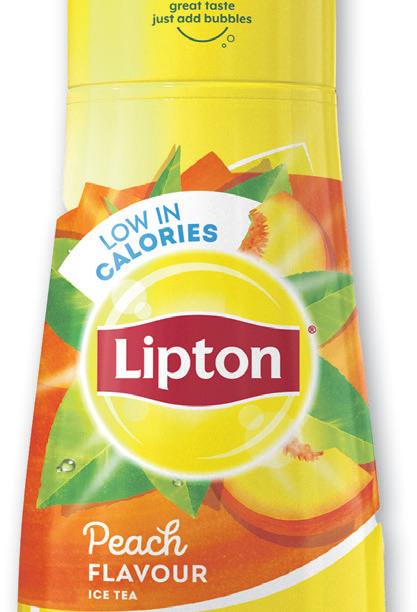

Eat your heart out Goldilocks, it’s the three beers time to shine! Receiving a gift from the GABS (Great Australasian Beer SpecTAPular), the Behemoth Brewing Co were giants among men securing back-to-back top billing in the annual Hottest 100 Kiwi Craft Beers poll recently. A focused performance saw Parrotdog’s Birdseye place second with Tiny proving big things can come from a small Garage Project. See www.gabshottest100.com for a full list of winners.




Even when the temperatures drop, Lipton Iced Tea raises the bar – whether beverages are served with a little something extra from a home bar or enjoyed on their own. Teaming up with SodaStream, Lipton has added even more to its repertoire with two new, sparking flavours (RRP $10.99), Lemon and Peach, which make quite the… ‘pear’! To mark the launch of this new partnership, we have a SodaStream & Lipton’s prize pack to give away – see page 6 for details.


Karen McMillan: The Quokka Logic & Baking Book | RRP RRP $29.99 | Duckling Publishing





Whether we say potato or tomato, virtually anything goes when it comes to frittatas! Ideal at any time of year (add seasonal ingredients to taste) this handy recipe comes courtesy of another kitchen classic, Nici Wickes. Further cracking ideas, all perfect when preparing Easter brunches, lunches and breakfasts, are available online at www.eggs.org.nz.
1/4 cup olive oil
1 onion, thinly sliced
500g (approx. 3 medium-large) potatoes
5 medium-large eggs
2 tbsp rosemary, chopped
1 tsp sea salt
1/4 tsp cracked pepper
200g bacon (half to dice, half as whole rashers)
2 tbsp caramelised onion chutney
2-3 tbsp chopped parsley
Preheat oven to 170 degrees Celsius. Heat half the oil in a large (23-26cm) ovenproof pan, dice half of the bacon and cook with the onion until soft.
Peel potatoes and either slice them very thinly or roughly pulse into peasized pieces in a food processor. Don’t overdo it or they will turn to mush!















In a large bowl, beat the eggs then whisk in rosemary, salt and pepper. Add the potatoes and toss well to coat. Add softened onions, diced bacon and onion chutney. Stir to combine.
Add the remaining oil into the pan and pour in the mixture. Reduce heat to low and cook slowly until the edges are cooked – this should take about 10 minutes.
Top with the remaining whole rashers of bacon and bake in the oven until golden brown and the frittata is set in the middle – about 20-25 minutes. Rest for 10 minutes, garnish with parsley and cut into wedges or squares, serving hot or at room temperature with chutney on the side.







Always season frittatas well (with salt, pepper, chilli flakes or herbs, for example) to compliment flavours from starchy vegetables forming the base, such as potatoes, pumpkin and kumara.


Always add vegetables into the whisked egg and toss to coat well before sliding them into the pan. Many make the mistake of pouring the egg over the vegetables in the pan and this leads to a frittata that won’t hold together.
Simple is best. Don’t add too many di erent ingredients – it’s a frittata not a jumble sale!
Cook well as undercooked frittatas tend to become soggy as they cool. Ensure it is golden brown around the edges for the sake of good flavour and good form.







Las Vegas has an Ei el tower, a statue of liberty (note the use of lowercase letters!) and even a pyramid, but Rotovegas (sometimes referred to as Rotorua) has much more to o er that’s specifically well suited to children, as JON RAWLINSON discovered.
Such unmissable attractions as the Skyline Gondola (including the famous luge), Whakarewarewa Thermal Village, hot pools and cultural shows are all par for the course when visiting Rotorua. While these have all been well documented, I recently discovered this marvellous town o ers much more for young visitors than I’d thought – the following ‘hot spots’ really stood out for myself, my partner and especially for our six-year-old daughter.

TREES? YES, PLEASE!
Kauri and Totara are no shrinking violets but they’re not the tallest timber on our blocks, as Redwoods Treewalk proves. Introduced to Rotorua a century ago, redwoods form the basis of a lofty tourist attraction. Rating high in our books, the Treewalk features elevated paths with suspension bridges and platforms. One ticket provided two visits, during
the day and again at night, each experience o ering something a little di erent and both splendidly scenic in their own ways. The lighting (at night) was tough to capture but it saw our daughter’s face light up with… delight!
Although this attraction wasn’t chosen because it appeared child friendly, it certainly was – it is even accessible for pushchairs, a definite plus for little legs too small to trot merrily across its bridges.


A kid from Pukekohe is no stranger to farm tours and The Rotorua Heritage Farm tour did not disappoint. However, the icing on this attraction’s cake was a strange bedfellow (in more ways than one!), the 3D Trick Art Gallery.
Based at the same location, the gallery features paintings designed to appear three dimensional, encouraging visitors to use their imaginations through an interactive experience. Art enthusiasts may love the Louvre, but both children and ‘children at heart’ will adore this attraction.
Bad puns and dad jokes are as garden variety as hedge mazes, but the Amazeme maze actually did live up to its name. Armed with overconfidence in my internal compass, I quickly became lost. Fortunately, our daughter soon worked out a navigation plan… and it worked!
While there’s not a lot at the centre of this maze – other than a bloated sense of undeserved selfsatisfaction on my part! – it was the extra touches that impressed me. From beautifully (although ruggedly)

crafted boardgame tables to a dress up wardrobe, artful gardens and some bunnies to love and pet (what was that about bad puns?), Amazeme o ers plenty to inspire, challenge and entertain young minds.
Some golfers aim for eagles, we opted for bunnies. Mini golf is common enough but ask a six-year-old if she would prefer to play a round or play a round while playing around with rabbits and the choice is clear!
The aptly named Rotorua Mini Golf with Rabbits lived up to expectations. Sure, I was a little put o (although not hopping mad) when a big old bunny bounded across the third, but it made for a rather surreal moment. The course itself wasn’t too challenging, even for our daughter, but the fairy gardens, fairy lights and delights brought about by its inhabitants certainly made her day.


Has Easter caught you on the hop? If so, there’s no need to pop to the shops again if you’re planning to keep children busy. Thanks to these quick and easy craft tips we can help children exercise a little creativity rather than just leave them to spend the break sco ng chocolate!
PAINTING EGGS is an old favourite that can easily go awry often producing more mess than decoration. Raw eggs can be used but this requires removing their insides, using a small drill and bulb syringe, before (carefully!) washing and drying the fragile empty shells.
Luckily, there is an easier way, one that’s less likely to see children and adults end up with egg on their

faces – hard boil eggs, leave them to cool, job (almost) done! Paint, felt pens and stickers can all help little imaginations shine, and cooking the eggs ensures there’s less chance artful designs will go o the boil.
PAPER RABBITS are also easy to make. White paper or plastic cups (or cups painted white) form the basis for these bunnies. Long ovals cut from light, coloured cardboard form the insides and outsides of the ears while a strawberry shape makes a delightful button nose.
After some finishing touches little imaginations can run wild and to their little hearts’ content providing extra decorations. Then these dapper rabbits will be ready to roll –well, they can’t hop, obviously!

































It’s time to meet the latest in a long line of legends
More luxury than you’ll ever need for an adventure. And more capability than you’ll ever need for the city. This is the sixth generation of the Impreza, massively matured since the gravel spitting rallies of the nineties. The striking styling, All-Wheel Drive and 2.0L Boxer engine you’ve come to expect – but more spec’d up than ever and a massive leap forward in tech and luxury.

























On trend with interior design, Rachael Buxton is also in tune when it comes to the latest tones.



 IRachael Buxton
IRachael Buxton
nternationally recognised colour foundation, Pantone, has declared the dominant hues for home trends to be colours within the ‘stone fruit range’. Peach and apricot are leading the way with ‘Peach Fuzz’ named colour of the year for 2024.
When we refer to the stone fruit range, we incorporate hues of plum, peach, apricot, raspberry, pink, rose and burgundy, which combine well with chartreuse, mustard, emerald, violet and indigo blue. These colours can form the basis of a warm and inviting colour palette, o ering interesting colour accents even when incorporated into relatively neutral background colour schemes.
These colour tones also combine well with popular interior hardware, such as rose gold, copper and gold tapware, lighting and door hardware. In this instance, warmer tones of copper and gold are preferable to colder options, such as black, chrome and stainless steel. Olive green and emerald hues can also be introduced into these colour schemes through real and artificial plants.
Colour can easily be intensified or muted depending on where the main colour blocks are assigned. Consider the overall look. For instance, will you apply a magnificent mustard colour to the walls of your dining room or take a more reserved approach by introducing colour in upholstery and occasional chairs or cushions?
A collection of vases in a range of stone fruit colours will bring warmth and interest to a home without the cost and hassle of decorating or investment in new furnishings.
Romanticism and botanical inspiration abound and sit beautifully with these stone fruit colours. This is because flowers and foliage often appear in artwork, on bedding, wallpaper and upholstery fabric as well as through fresh and dried floral arrangements.
Whatever your penchant for change, and personal colour preferences, always try to be open to fresh, new ideas. You never know, you might just surprise yourself with your colour confidence and breathe new life into your home. Happy decorating!









































































In the hustle and bustle of modern life and the increased ability for people to work from home, many individuals and families are looking for a reprieve from the relentless pace of urban living and slowdown. The appeal of a city has slowly given way to a more profound desire for a life surrounded by nature and tranquillity, in a concept known as a “tree change”.





The phrase “tree change” has become a universal concept, describing a significant lifestyle shi from urban environments to rural or semi-rural areas, usually surrounded by natural landscapes. It embodies the desire to break free from the monotony of city living and reconnect with nature’s abundant beauty. For many, the prospect of a tree change is an opportunity to escape the pressures of urban life and find peace and fulfilment amidst a simpler, more harmonious existence.
Peace and Tranquillity: One of the most common motivations for a tree change is the pursuit of peace and tranquillity. In rural settings, the hustle and noise of city life are replaced by the soothing sounds of nature, o ering a chance to rejuvenate the mind and soul.
Communing with Nature: Nature has an innate ability to heal and inspire. Living amidst lush greenery, open skies, and unspoiled landscapes allows individuals to re-establish their connection with the natural world, fostering a sense of wonder and appreciation.
Improved Health and Wellbeing: Studies have shown that spending time in nature can have positive e ects on mental and physical health. Embracing a tree change o ers the chance to lead a more active lifestyle and reduces stress levels, contributing to overall well-being.


sustainable and eco-friendly living practices. Living close to nature encourages a more conscientious approach to resources and o en promotes self-su iciency.
A Slower Pace of Life: Rural living encourages a slower, more deliberate approach to daily life. People o en find themselves enjoying simple pleasures like stargazing, tending to gardens, or taking leisurely walks.
Stronger ense of Community: Small towns and rural areas o en foster tight-knit communities where neighbours look out for one another, creating a sense of belonging and support.
Opportunity for Self-Discovery: A tree change can be a transformative experience, o ering individuals the chance to explore their passions and engage in creative pursuits that might have been overlooked in busy city life.
Reduced Cost of Living: Generally, the cost of living in rural areas is lower than in cities. This financial relief allows for a more relaxed lifestyle and financial security.


adaptability and a willingness to embrace the unknown.
A tree change is a leap of faith, an endeavour that o ers profound rewards for those seeking to redefine their lives and reconnect with nature’s embrace. The decision to leave behind the city’s conveniences for the serenity of rural living is not one to be taken lightly, but for many, it is a path to personal growth, well-being, and a greater appreciation for the wonders of the natural world.
Living: Many people seeking a tree change are driven by a desire to embrace
Limited Amenities: Moving away from urban centres may mean sacrificing access to certain amenities and services that were once readily available.
Employment Opportunities: Finding suitable employment in rural areas can be challenging, especially for those in specialised fields.
Social Isolation: For some, the distance from family and friends can lead to feelings of isolation. Building a new social network takes time and e ort.
Adaptation Period: Adjusting to the lifestyle changes that come with a tree change can be both rewarding and challenging. It requires
If you find yourself yearning for a simpler, more meaningful existence, embarking on a tree change might just be the transformative journey you’ve been seeking. It is a chance to immerse yourself in nature’s beauty, find contentment in a slower pace of life, and rediscover the joys of genuine human connections within a nurturing community.
Talk to Jo-Ann and Victoria, they have made the Tree Change and can talk to you about how best to approach it – they are the team that brings you the Best Of Town and Country.


Few who have inherited the ‘luck of the Irish’ have ever ‘looked over a four-leaf clover’. This is because the classic shamrock is actually a three-leafed variety of the plant. Even though it is treated as a weed here in New Zealand, in honour of Saint Patrick’s Day it’s the perfect time to take a closer look at a plant that has become synonymous with the original Emerald Isle.
A hardy customer, shamrocks thrive almost anywhere, as many Kiwi gardeners and farmers will attest. A

Stonewood Homes Auckland East and South is led by Graham and Nicola Kock, who moved to Auckland from South Africa in 2014.
The husband-and-wife duo’s skills complement each other’s well and are no strangers to the construction industry, having previously owned businesses in South Africa focused on designing and delivering various commercial and residential construction projects.



common myth has it that they will only grow in authentically Irish soil, but considering everyone is at least just little Irish on St Pat’s, perhaps there is an element of truth to this!
Widely used as a symbol of Ireland, the shamrock is generally considered to be the lesser clover (Trifolium dubium). Meaning ‘little clover’ it gains its name from the English translation of ‘seamrog’.
According to legend, Saint Patrick used the shamrock (due to its three leaves) to illustrate the Christian

Since moving to NZ, Graham has continued to add to his over 25 years’ experience in various parts of the construction industry having managed large, multi-million dollar construction projects across the North Island over the last 10 years.



doctrine of the trinity. However, its association with bringing good luck predates Christianity – the druids believed it could ward o evil spirits.
While it does become more prominent when good spirits abound, the shamrock actually proved quite unlucky for those caught wearing it as a symbol of rebellion against England during the 19th Century. The results were far from fortunate for them!
On that cheery note, we hope readers have a lucky Saint Patrick’s Day while out painting the town green.

together, and we can’t imagine a better job than helping to create and build new residential environments and homes for the community.”
Nicola has more than 20 years’ sales experience and a passion for interior design, having successfully taken control of the interiors of various residential projects they have completed over the years.
“We love creating beautiful spaces
Graham and Nicola’s son Tyler is just as interested in the building industry as they are. Having just completed College last year, he is now studying construction management.
The couple are always keen to get involved in community events and look forward to getting to know more locals as they build their business, as well as welcoming new faces to the community.
Contact: Nicola.kock@stonewood.co.nz
Thorny and (it could be said) ornery, wild Irishman might not be a common symbol of Saint Patrick’s Day, but this Kiwi native is Irish by name if not necessarily by nature.
Also known as Matagouri, wild Irishman (Discaria toumatou) is a thorny, tangled bush featuring small leaves with green and white flowers. Growing in coastal areas, including in some places near Port Waikato, wild Irishman is also found in South Island tussock lands.
This native has been under threat as it has been widely burnt o to clear pasture while also facing competition from aggressive weeds such as gorse. Although its sweet,
spring sap can draw in possums, this can be advantageous to those who wish to draw such pests into the jaws of their traps.
No loveable clover, wild Irishman can prove lucky (or useful at least) for some. Historically, the thorns were used by Maori for tattooing and the nectar is an especially good building block for tasty honey. What’s more, due to their ability to take nitrogen from the air, these plants are not only able to thrive in poor soil, they actually enrich their growing grounds as well.
All things considered, farmers, lifestylers and even gardeners could do worse than cultivate a few of these bushy ‘beauties’.









Pet s can face stressful situations beyond their control, such as loud par ties, long trips, and fireworks Pet C alm offers a natural solution with non-narcotic herbs to soothe pet s Tr y it for a calm and relaxed pet or simply for when a good night 's sleep is needed A s used by kennel proprietors nationwide







If ‘slow and steady wins the race’ holds true, the Auckland property market is on form. Making its traditional slow start to the new calendar year, it has seen prices and sales edging below where they were tracking in the final quarter of last year. This is in line with the past four years, however, when January sales numbers and prices fell below those for December.
Following on from that start, the February market for sales (in both residential and the rural lifestyle markets) has appeared a little soft, but a surge in new properties coming onto the market has countered this with an extraordinary number now being presented for sale.
Locally, the sales trend was strong throughout the Christmas holiday period, perhaps this was fuelled by a buoying of post-election confidence.
Certain segments of the market do appear to be sitting on their hands (or wallets!) to some degree as people wait for the property initiatives promised by government for its first 100 days to materialise fully. Once implemented, these changes have the potential to encourage a significant increase in buyer demand.
In the meantime, this uncertainty is enough to create a temporary hold on decision making among some, particularly when we have had a marked di erence in commentary from some banks with regards to interest rates. A recent announcement by the Reserve Bank confirming interest rates will ‘hang tough’, despite


 Chris Burger
Chris Burger

suggestions they may rise, should put pay to that. If so, this will act as a further invitation to more buyers to re-enter the market.
The rural and lifestyle market has not been immune to the external influences I’ve mentioned. While there was a significant reduction in demand early in February, this could easily be explained by the holiday season dominating people’s priorities.
From the end of February there have been signs of a return by buyers to the market due to the new array of properties listed and a strong following for those presented at their best. As buyers now have a large selection from which to choose, sellers need to take good advice from experienced agents to ensure their properties are seen in the best possible light.




Save
Save
Save Thousands Across Our Complete Range Of Pre-Owned & Demonstrators



















PETER PERFECT: Anyone for a little anthropomorphism? It may seem strange to some, but a simple framed photo of a favourite pet isn’t quite as popular as it used to be. As Ink & Drop has discovered, custom created prints portraying animals (usually pets) have been setting a trend across Europe and beyond.
While the chap pictured (we’ll call him Peter) is a great choice for an Easter gift, this UK-based company can work from almost any photograph to immortalise pets as princes, queens or commoners in any style of period costume.
Why have dusty old portraits of people when we can ensure our homes go to the dogs… or the rabbits, cats, horses, pigs or rhinos for that matter? To purchase prints o the shelf (including Peter!) or place an order visit www.inkanddrop.com.

